Hookton Slough
Humboldt Bay National Wildlife Refuge
(Pink. Map link.)
I headed over to Hookton Slough. It has a more generous gate timing of closing at sunset. The trail follows an old levee along the edge of the slough almost to the beach below Table Bluff. The wildlife refuge ends there. Since beaches are public, you can probably continue on at low tide, but I've not done this. I just strolled along the levee. Since they don't allow dogs, horses, bicycles, or even running, that's all one can do without a boat. They do allow you to put in with an unpowered boat and start in on the water trails through the bay.

I spotted movement in the water and found striped shore crabs in abundance among the rocks put down to armor the levee edge. They seemed to see me, too, and tended to be scrambling away. Not all of them, though. Some stayed out to be photographed, albeit underwater.
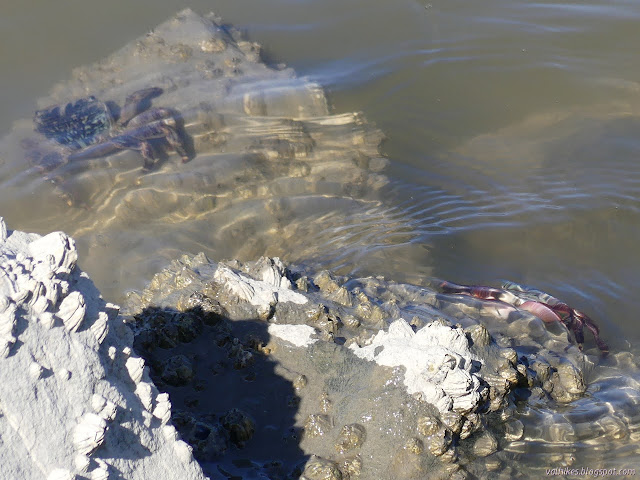
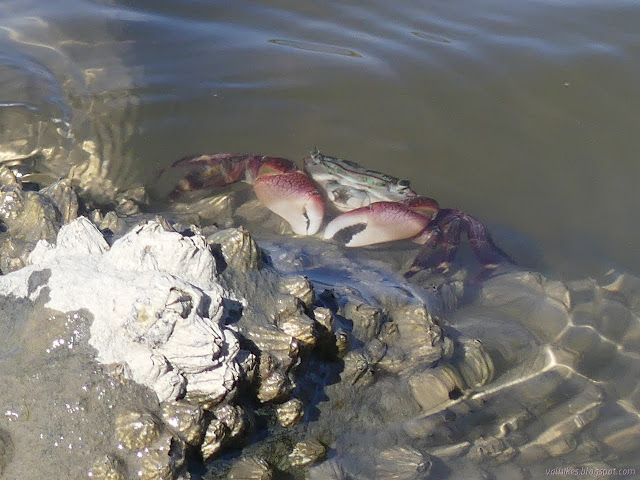
The other side of the levee is primarily salt marsh. Further on, mud flats start to appear next to the levee. Each of these environments attract somewhat different birds. This time of year, there weren't many.


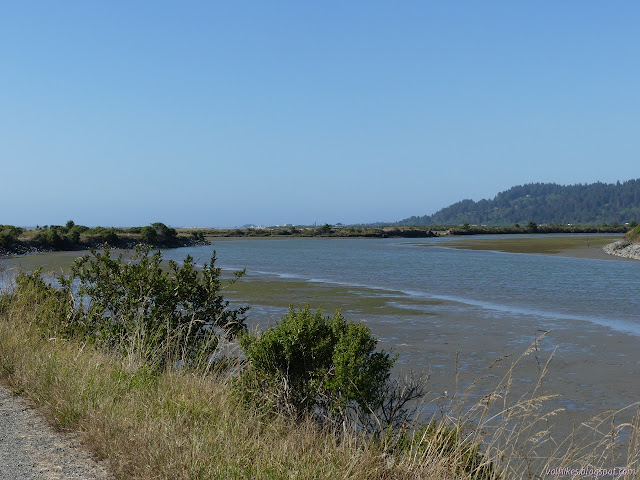
The wind brought a cacophony of noises to me from the trees on Table Bluff. They'll tell you about the egrets nesting in the tops of the trees, but now they actually were. I also noticed a curious circle of white heads gathered out in the marsh, as well. Maybe there's fresh water out there too, if you know where it wells up. Maybe it's just good food.

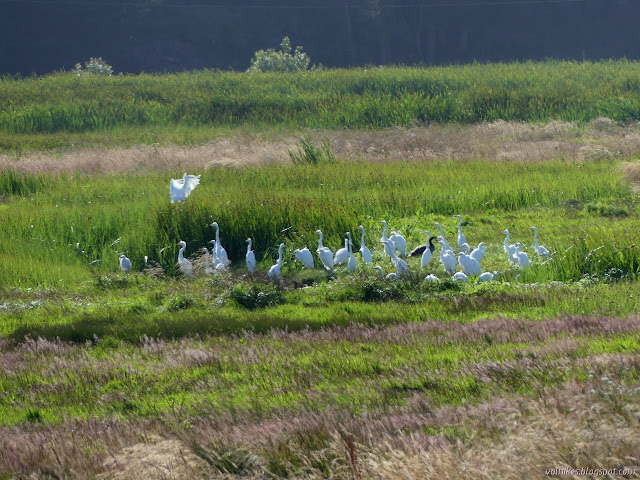
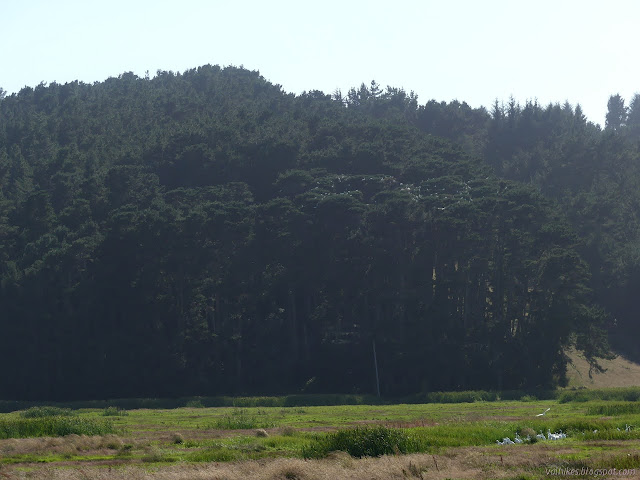
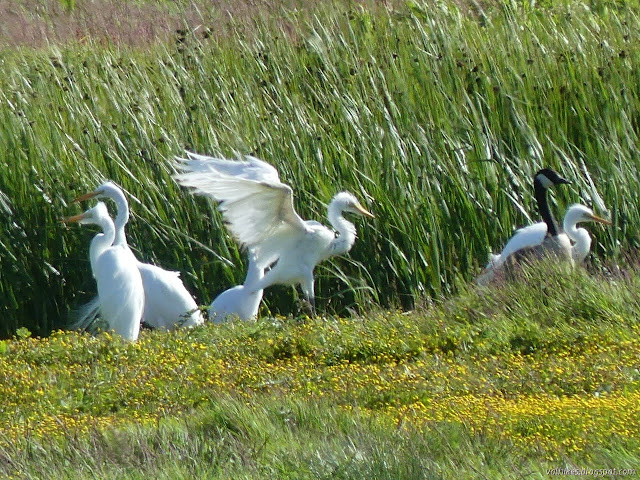
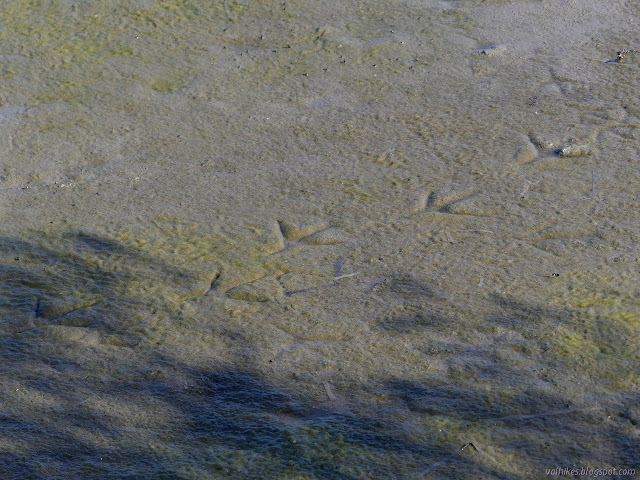
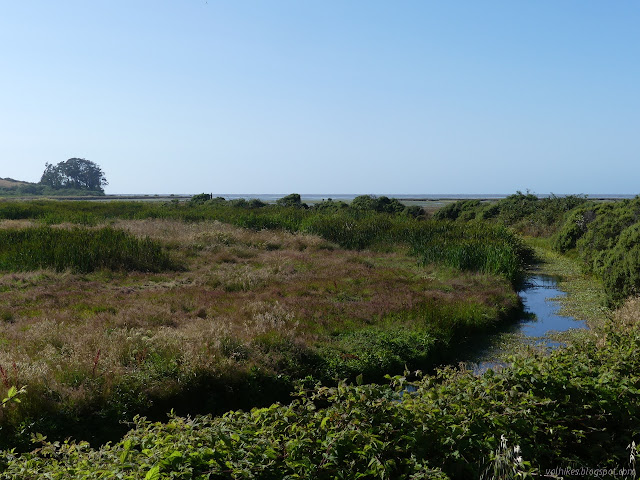

I passed a sign informing me that the sandpipers are off in Alaska for the summer. I watched distant flutterings of colonies of little birds that settled on distant mud flats. They were too far away to see what they were, but they're certainly in the class I tend to call sandpipers. Behind them was a row of dark forms that are probably cormorants. Still, there were very few birds anywhere near me.
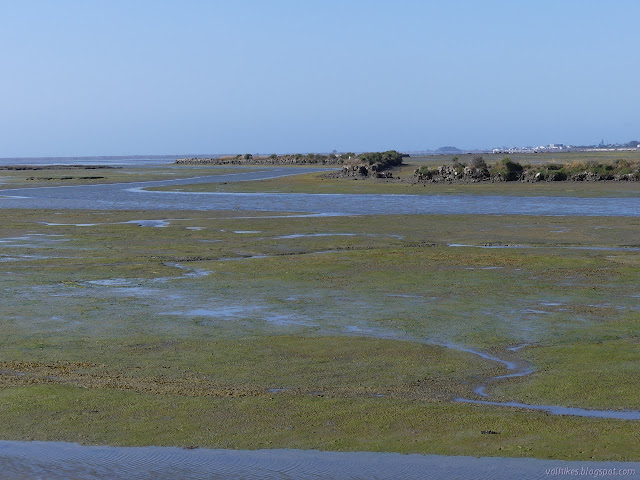

I hit the end of the path, then turned back and took some time at the last bench. There aren't a lot of benches, but they exist.
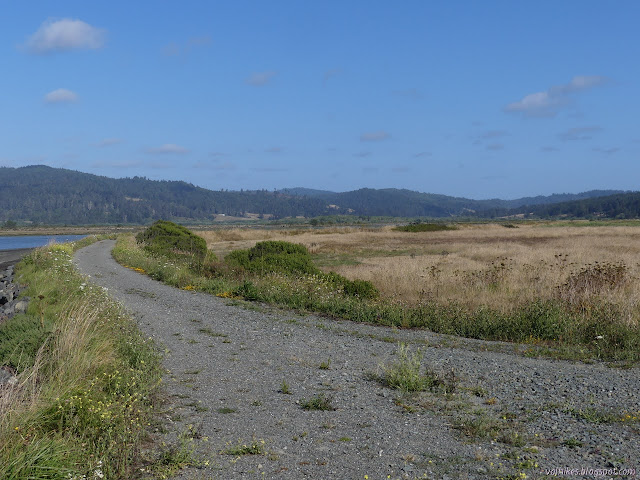
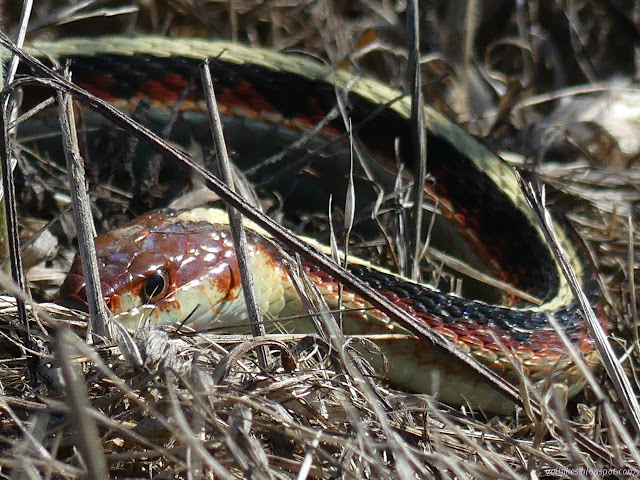

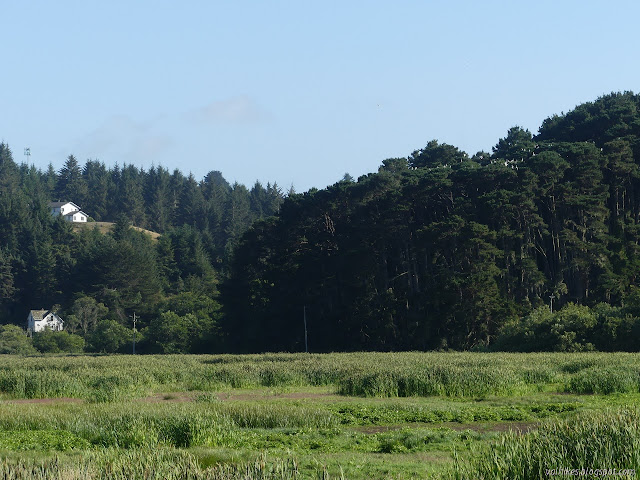
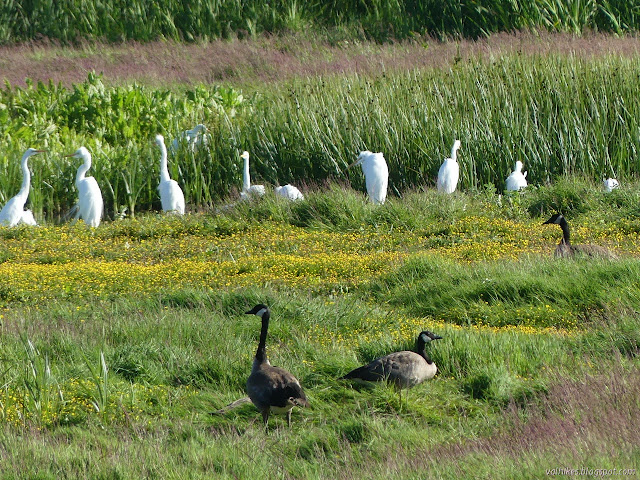
I arrived back at the parking long before sunset. That means I could have stuck around and tried to properly watch those birds! Or that snake.
*photo album*
©2021 Valerie Norton
Written 8 Aug 2021
Liked this? Interesting? Click the three bars at the top left for the menu to read more or subscribe!




Comments